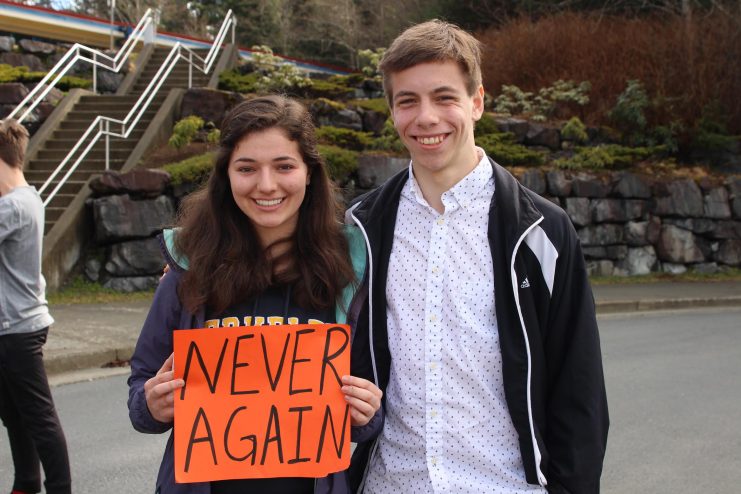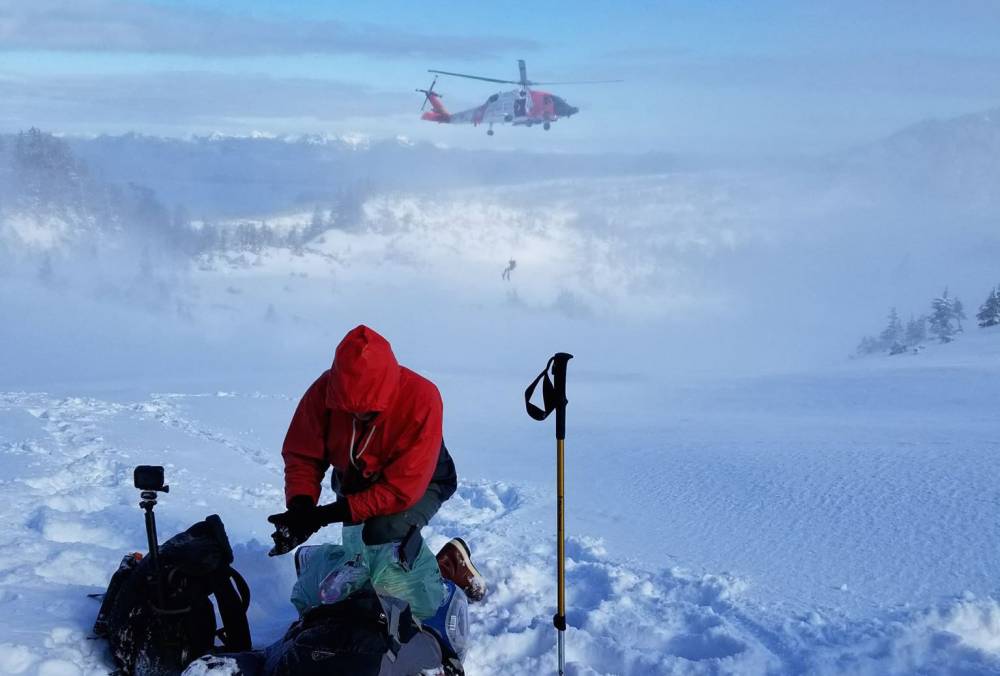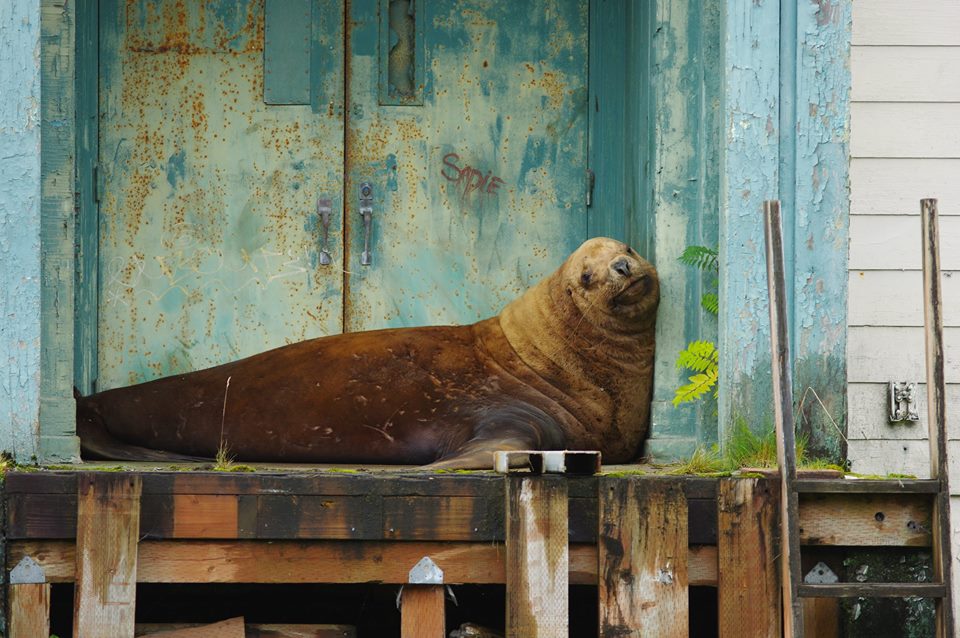
In 2018, a stranded sea lion captured the hearts of Sitkans. NOAA Fisheries biologists believe he became disoriented and could not find the ocean. The sea lion became a fixture over the weekend, attracting onlookers as it sought shelter near Mt. Edgecumbe Hospital and the surrounding woods. (Photo provided by Sitka Fire Department)
In 2018 in Sitka, fortune favored the bold. From landlocked sea lions refusing to stand down, to protesters calling for change, Sitkans fought for what they believed in this year. KCAW’s Katherine Rose reflects on a year in Sitka when its residents behaved boldly, without apology.
Downloadable Audio
It was early morning in late August, when not a deer, not a dog, but a sea lion was spotted flopping its flippers along the roadways of Japonski Island.
Concerned biologists tried to track him down, and the fire department even did their best to prod him with a light touch of the fire hose. As the stream of water drenches him, for a moment the sea lion looks undeterred. He lifts up his head, proudly elongating his neck, and stands resolutely, as if to say ‘No bother. I needed a shower anyway.’
For four days the sea lion hid in the woods, boldly going where perhaps no sea lion has gone before, refusing to go back to the water from whence he came. The image of him, resting on the porch of the old community health building, looking smugly at the camera, refusing to move, traveled across the world. He was a viral sensation, inspired Halloween costumes and even ended up on some Christmas cards.
Perhaps he’d taken some inspiration from Sitkans, because in 2018, it seemed was a year for the bold. Whether we were slapping on some bright red lipstick before a drag show or taking a strong stance on an issue, being bold was as en vogue in Sitka as smart speakers or Nissan Leafs.
Sitkans Stand Up in Protest
With the cost of living on the rise, city budget cuts, and multiple fisheries seeing record low harvests, there was a sense of economic malaise in Sitka, perhaps felt strongest by the fishing fleet.
Fireworks crackle
Fishermen chanting: Let us fish! Let us fish!
Three dozen fishing vessels paraded along Sitka Sound on a sunny day in June, boat horns blaring. Perched on the bow of one vessel, troller Cavan Pfeiffer held an orange traffic cone against his mouth, and shouted, “Governor Walker! We need you! Stand up!”
Salmon fisherman were worried the Governor would agree to a Pacific Salmon Treaty that deepens cuts to Alaska’s king salmon fishery. Standing with a group of conservationists and fisherman to greet the Governor’s vehicle, Eric Jordan said, “It’s a tough time for trollers.”
“There are things going on out here in the ocean. I fished all morning, got up at 3 a.m. in the morning and was out there in the fog and stuff for one fish.”
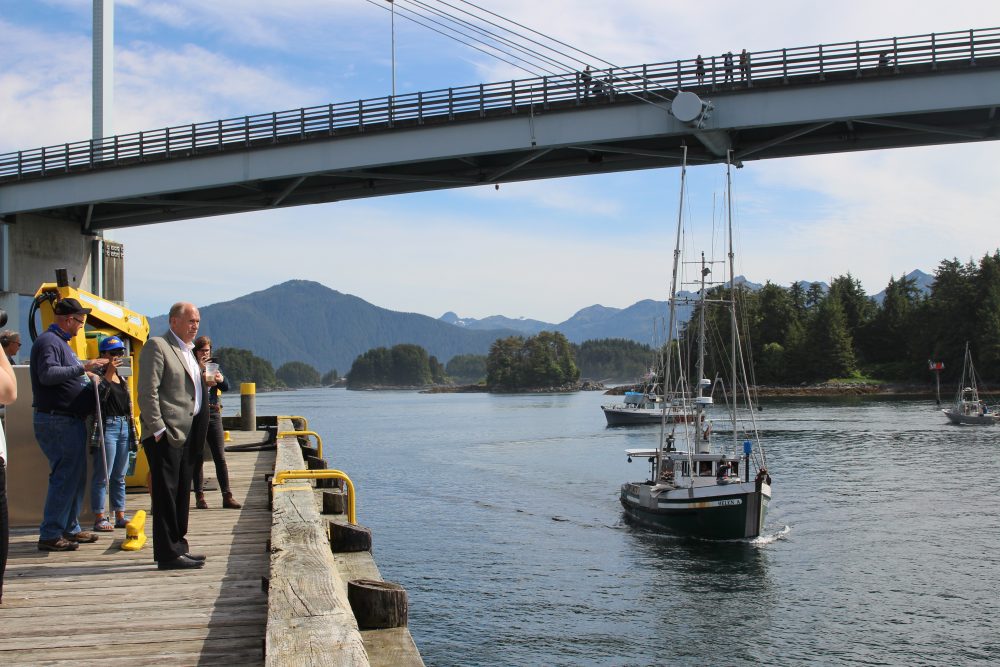
Governor Bill Walker looks out over Sitka Sound, as trollers pass by calling for him to not sign a Pacific Salmon Treaty that would further cut Alaska’s allocation. The salmon fleet organized a boat parade and rally to send that message. (Emily Kwong/KCAW photo)
And while over three dozen trollers paraded up and down Sitka Channel fighting for a fair shot at catching hopefully more than one fish, one Sitkan stood alone, but with a message just as loud. In March, as hundreds of thousands of people gathered in Washington DC to call for tighter gun laws, Annabell Lund-George stood in the roundabout bearing a sign that said “Books Not Bullets.”
“I’ve lived in Alaska for more than 40 years, the last decade here in Sitka,” she said. “This is a tough one for Alaskans particularly. Look, I’ve lived in Alaska for decades. I own guns. I’ve been a hunter. I even own a pickup truck. But I do believe there are things that we can do that can help (horn honk) prevent gun violence and increase gun safety without endangering our Second Amendment.”
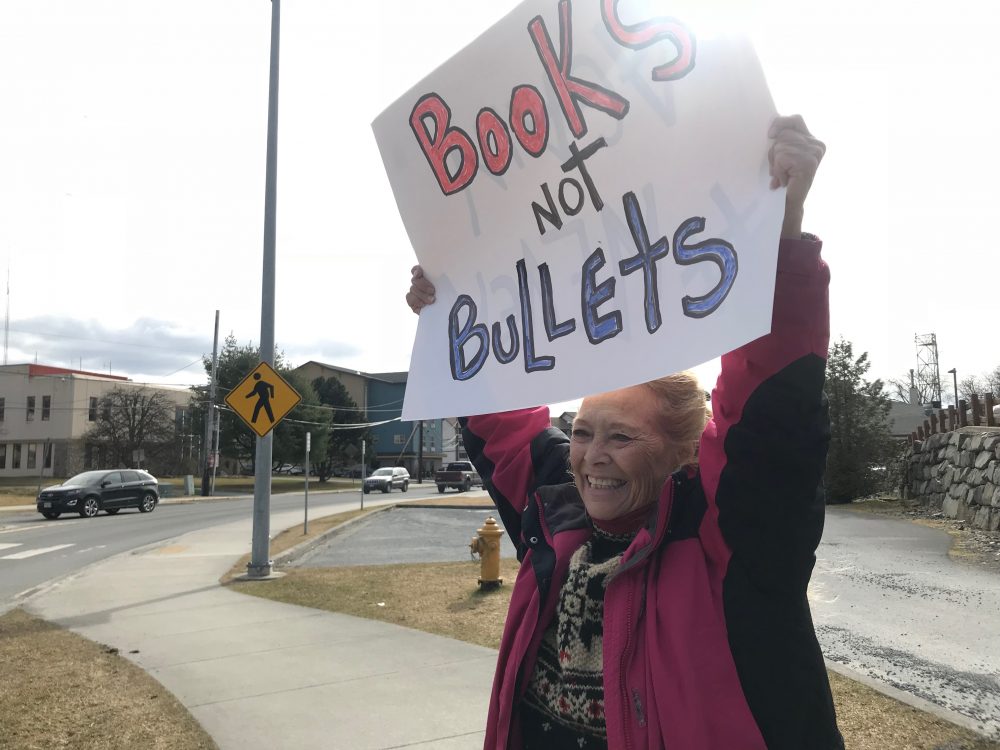
Annabel Lund-George stands in the roundabout in downtown Sitka with her homemade sign on March 24th, in solidarity with “March for Our Lives” demonstrators in Washington D.C. (Emily Kwong/KCAW photo)
Although the national protests were led by students, Sitka didn’t see any youth led protests that weekend — it was spring break, after all. But one was in the works for April, on the anniversary of the shooting at Columbine High School in Colorado. Led by Sitka High students Ella Lubin and Joe Pate, and a counter protest organized by Anders Marius, the students walked out, stood on opposite sides of the school chanting, mirroring the national conversation surrounding a contentious issue.
“The last presidential election showed the quick polarization that’s taking place in the country,” Lubin said. “I think for our generation right now that kind of was a wake up call. Wow, if people can change and digress to one side so quickly, why can’t we rise up so quickly?”
In October, students rallied again, this time in support of Juliana vs. the United States, in which 21 youth plaintiffs are suing the federal government over climate change. The case was put on hold in the US District Court of Oregon , but youth in Sitka spoke out nonetheless. Over 100 people gathered in front of the court house, to hear Pacific High student Killian DeTemple and others voice their concerns about government inaction.
“The current predicament is not born of plastic straws and car combustion engines.” He added, “Those contributing most to the state of the world are not those in our homes and daily lives, but those in corporate offices and executive meetings. It is these people who bleed the byproduct of their profit into our oceans and waterways, suffocate our atmosphere with our carbon haze and pretend like they care while doing all of it. As individuals, our voice may not always feel heard and to corporations even less so. But this cannot stop us.”
Sitka Tribe Sues State
Locally, the effects of a changing environment were visible in the empty freezers of the Tlingit and subsistence communities when the herring harvest came up short. As Sitka Tribe of Alaska resource protection director Jeff Feldpausch bagged hemlock branches for distribution to elders, he noted that the coating of herring eggs was far below expectations.
People don’t want trees in their freezer, it’s all about putting eggs in their freezers not branches,” said Feldpausch. “This is looking grim. This is really grim.”
The commercial herring fishery also ran into trouble in March, falling over 8,000 tons short of a quota. And this fall, the Alaska Department of Fish and Game set a guideline harvest limit STA didn’t feel was sustainable. So they filed suit against the state of Alaska, claiming mismanagement of the herring fishery. STA chair KathyHope Erickson said they were taking a stand over 20 years in the making.
“We’ve been testifying before the board of fish for a couple of decades now at least, and it hasn’t gotten us very far,” Erickson said. “It’s getting to be such a dire situation.”
Sitkans Demand to be Seen
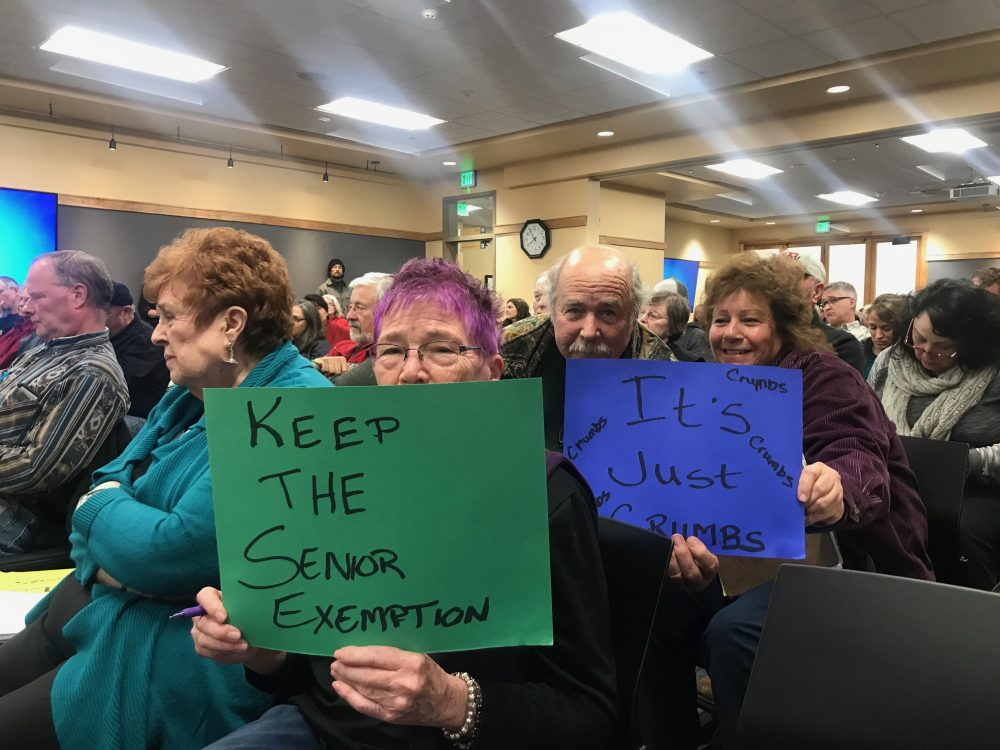
Many of those testifying against the ordinances were senior citizens themselves. Grace Larsen stood before all seven family members, six of whom are under 65, a yellow sign that said “Seniors Do Count.” (Emily Kwong/KCAW photo)
And Sitka’s seniors pushed back when programs were cut. In April, the assembly voted 4-3 to eliminate the senior sales tax exemption and replace it with a rebate program. Over 40 citizens testified at the meeting. Then, in the coming months, a petition led to a question on the November ballot- should the senior sales tax exemption be reinstated? 58 percent of Sitkans said ‘yes,” and the new ordinance was overturned. A second ballot measure to make Sitka’s bars exempt from a statewide smoking ban failed.
For some, being seen was an act of boldness. A group of Sitkans held their first ever public pride celebration in June. Organizer Maia Mares has lived here for two years and notes she hasn’t been as ‘out in Sitka as other places she’s lived.
“I’ve found if I don’t raise the issue myself, it’s not raised or there isn’t space to raise it,” she said. “I wish queer life in Sitka were more vibrant and visible.”
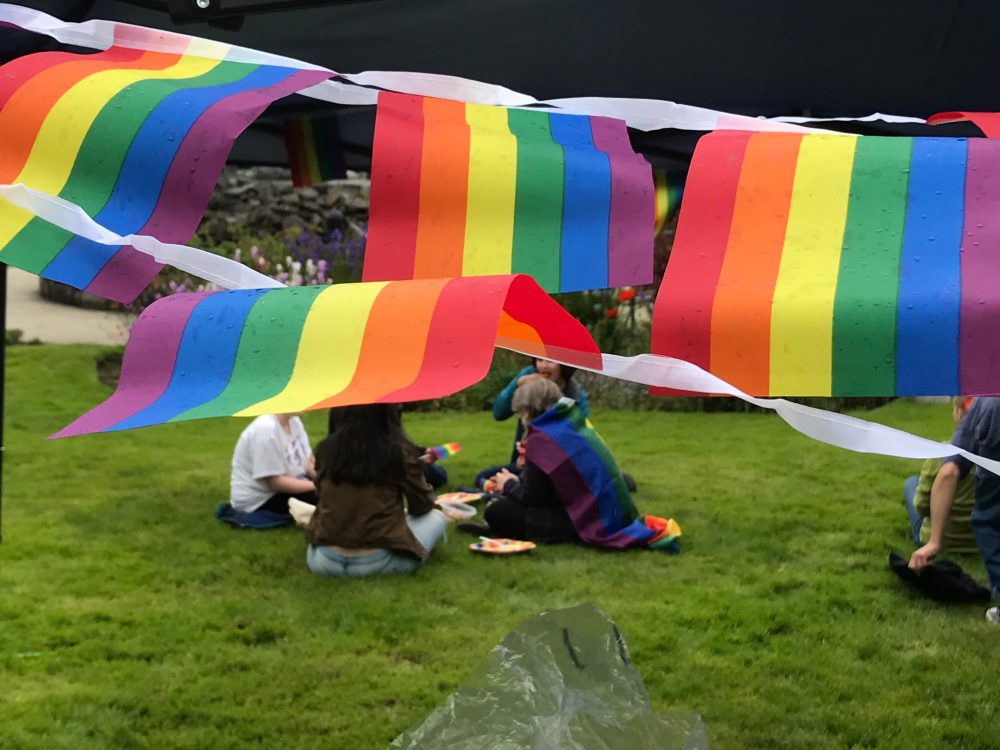
Sitkans picnic at the town’s first LGBTQ+ Pride celebration on the lawn outside the Pioneer Home Manager’s House. Originally planned as a private event, organizers chose instead to go public in the hope of stimulating more gatherings in the future. (KCAW photo/Rachel Cassandra)
And later this summer, some of the LGBTQ community became even more visible, with Sitka’s first ever drag show held at the Mean Queen.
Sounds of Katy Perry and audience cheering
Creating a queer space made an impact in Sitka this year. Here’s Aren Vastola, a lifetime resident who was in the audience:
“It’s really great to see this kind of gender nonconforming performance in Sitka,” Vastola said. “As a member of the LGBT community myself, it’s also kind of really comforting and reassuring to see people coming out both like not just to see a show but also in support of that.”
And performer Ann Poindexter had advice for young people who might be drawn to drag:
“Just experiment. Like just put on heels if you’ve always wondered what would it feel like to put on heels.”
Sitkans Behave Boldly
And when it came to challenging gender roles and expectations, some women tried their hand at the shooting range this year at the women’s pistol clinic, a training group that’s grown substantially over the last few years, teaching women to use firearms safely. Participant Andrea Turner said the environment challenged her in a way that helped inform future conversations about gun ownership and gun violence.
“My thing that I’m working on this year is confronting fear in all aspects of my life,” Turner said. “I’ve had very strong opinions about guns for forever. I got to thinking about it and realized that a lot of those opinions are based on fear, and a lot of that fear is based on the fact that I don’t know a lot about guns or gun safety.”
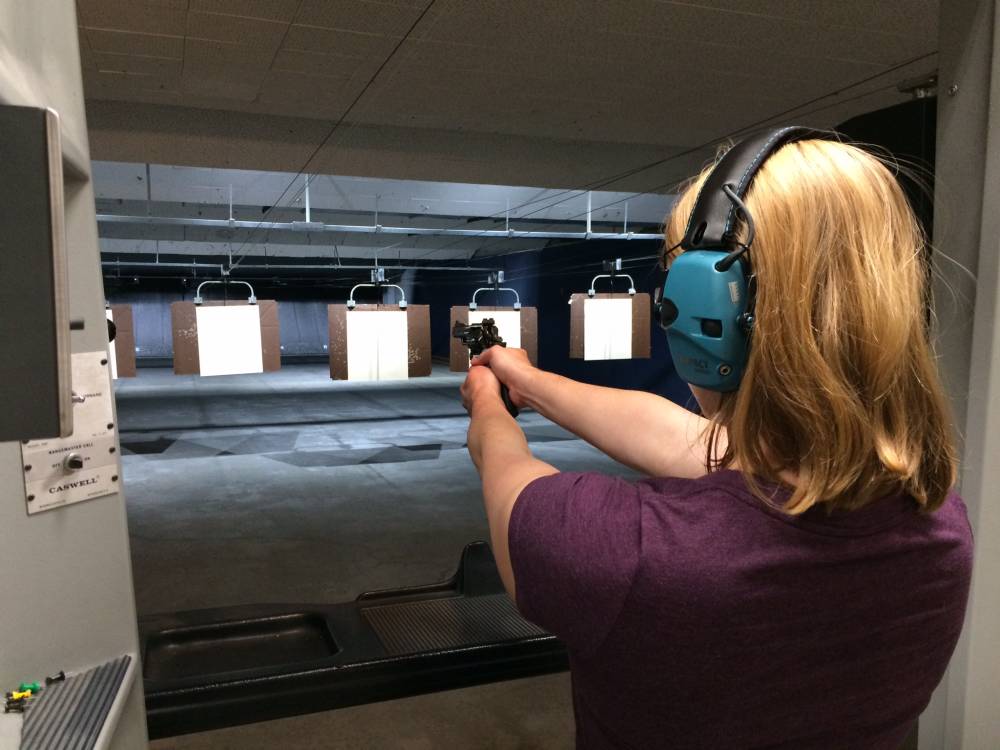
Participant Andrea Turner practices dry firing her pistol at the women’s pistol clinic, a 4-week course offered by the Sitka Sportsmen’s Association. (KCAW Photo/Katherine Rose)
And a woman’s bold fight for justice, moving across the world and risking imprisonment, with her congregation standing behind her.
Congregation of Grace Harbor Church sings
“We’re praying for Indea while she is in custody… and we look forward to the day when this family can be reunited,” Pastor Paul McArthur says from the pulpit.
Indea Ford lived in Sitka for nearly three years after escaping an alleged abusive relationship in Great Britain with her two daughters.
“And it got to a point one day,” Ford said, “when he was being particularly abusive — and both Grace and Ava were there — and I sat there and looked at my girls and realized that the only thing I’m doing is letting them think it’s okay to be treated like this by someone.”
Ford was extradited in April and accepted a plea deal in the UK that could mean another 18 months incarceration. Her daughters, however, are safe in the US with her husband, a member of the Coast Guard, and her family and church are still fighting for her to come back home.
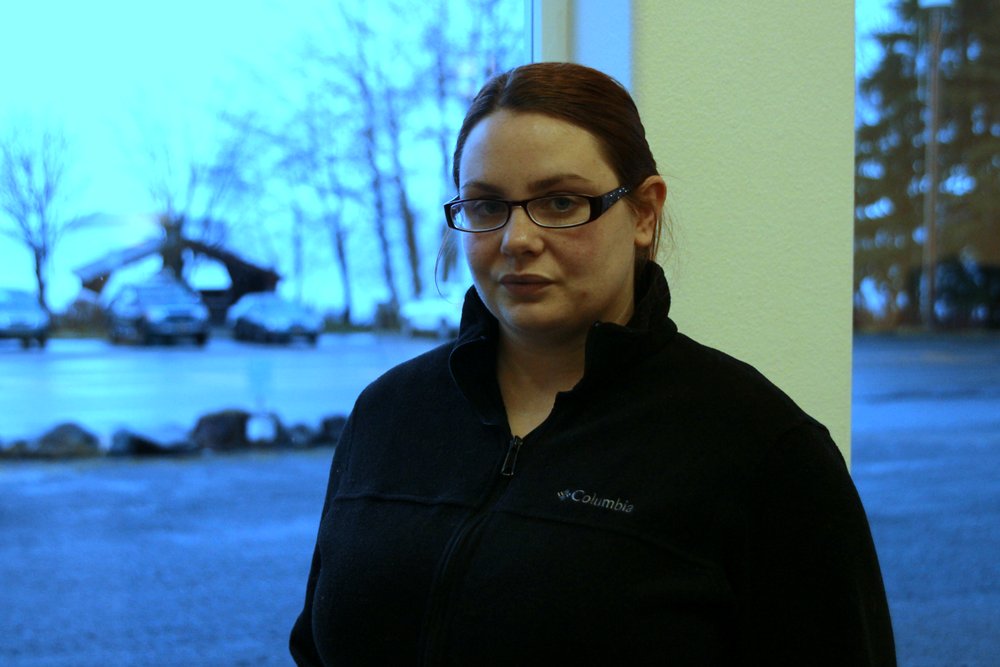
Indea Ford in Sitka this past January, the day before she flew to Anchorage and surrendered to US Marshals. She had been under house arrest in Sitka since April 2017, when the US Department of State received an extradition petition from the UK. A year away from full citizenship, Ford had just taken her driver’s license exam and was celebrating with lunch at the Westmark with her husband and three children, when US Marshals arrested her on the street corner. “I thought I had failed the test!” she says. (KCAW photo/Robert Woolsey)
And for airport luggage handlers with injured backs who have a hard time standing up with everyone else, Sitkan Tim Fulton invented a device that could save his fellow rampers years of pain going forward. Called TISABAS — short for TimSAvesBAckS — it’s an ingenious folding conveyor belt that works inside planes.
“I was impressed. This was the first time I’ve seen it in action and it worked a lot better than I expected, to be honest with you, Tim,” said fellow ramper Bob Weaver. “That guy at the door has got to throw the bag from here to there. I mean it’s hard. Especially on the floors. Some of the floors slide well. Some bags slide well. Other bags don’t slide well. People bring too much stuff. You don’t need high heels in Alaska!”
Maybe people packed too much in their suitcases but what about their backpacks? Some Sitkans scaled mountains this year with plans brighter and bolder than a typical campsite. Josh Joseph climbed Mt. Edgecumbe in March with an an inflatable unicorn, planning to throw a disco party with his friends when they reached the top.
“We decided we could light up the volcano with a strobe light. I could get some lasers and a little disco ball and make it look like a rave,” said Joseph. “It all sounded very doable, it didn’t weigh much to do that stuff.”
But conditions weren’t great, and after waiting out a blizzard overnight, listening to *Sandstorm* in a makeshift snow cave, Josh and his friends were rescued by the coast guard. But Roman Sorokin says they haven’t given up their dream just yet.
“Josh and I are already talking about a comeback to the mountain,” said Sorokin. “Hey, you learn every single time. You become wiser. Smarter, you’re able to reflect on your fears and concerns. I think mother nature was testing us to see if we were worthy of the next adventure.”
If this year was testing us for the coming adventures, Sitkans proved they’re ready. Whether at a drag show, a mountain disco dance party, or fighting for a cause, we stood boldly in 2018.























